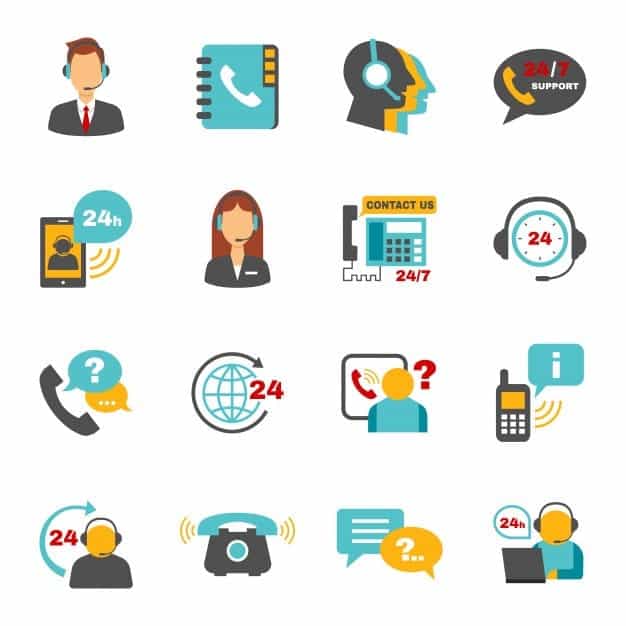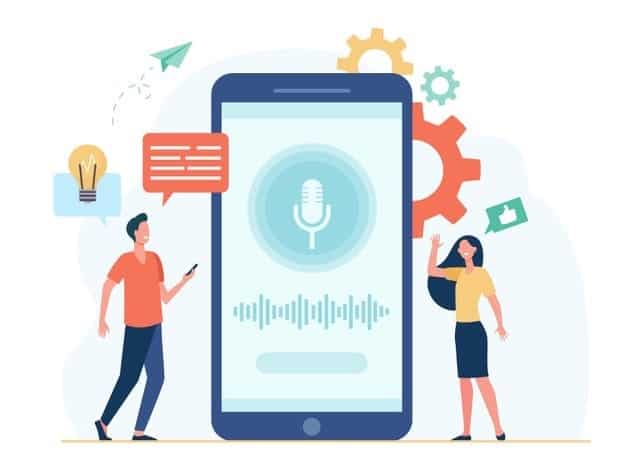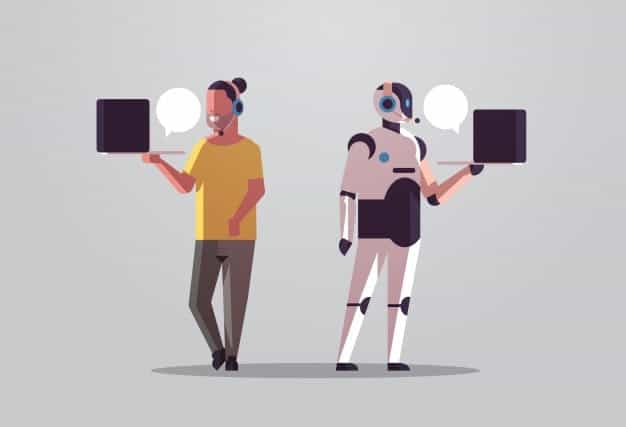Reports show that 94% of customers are more likely to recommend a company if they feel that they have received very good customer service. With those insights in mind, it is no surprise that superior customer service is at the heart of any contact center or call center.
Ever wondered though, “What is the difference between a contact center and a call center?” If so, you’re not alone.
While often used synonymously or interchangeably, ‘call centers’ and ‘contact centers’ are not one and the same.
Don’t worry, knowing the difference between the two is not complicated.
But, having a clear understanding of the difference between a contact center and a call center and their services is important, as it will allow you to choose a solution that is right for both your business and your customers.
Read on to learn about the main differences between a contact and a call center.

1. Communication Channels
The most basic difference between a call center and contact center is the way they interact with customers.
The terms are quite literal but easy to remember:
Call Centers focus exclusively on inbound and outbound customer communications via phone calls.
Contact Centers expand their services to handle inbound and outbound customer interactions on any channel, including the phone, email, social media, the web, instant messaging, and apps.
2. Customer Service Approach
As expectations and technology evolve, smart businesses respond by updating their customer service strategy and solutions to better align with customer expectations.
Not long ago, when customers encountered issues, reaching out via phone was the only way to get in touch with a business for assistance.
Fast forward to today, and contact centers interact across all channels, using customer behavior to predict points of friction, and providing solutions before the customer reaches out. Thus, contact centers employ a proactive customer service approach.
Traditional call centers still focus exclusively on managing calls for businesses whose customers interact primarily via phone. Since callers initiate their own resolution, a call center’s customer service approach is considered reactive.
Reactive vs. Proactive Approach
What is the main difference between a reactive vs. a proactive customer service approach?
A reactive approach is employed by call centers and requires customers to initiate support by calling in with an issue before a solution can be provided.
A proactive approach is utilized by contact centers. Contact centers look at customer behavior on multiple channels to predict frustration points and provide solutions before issues get escalated.
Studies show that customers prefer companies to take a more proactive customer service approach. According to Microsoft’s 2018 “State of Global Customer Service Report,” 70% of customers have a more favorable view of brands that offer or contact them with proactive customer service notifications.
While the primary appeal of proactive support is a faster, more enjoyable customer experience with less effort on the part of the customer, the residual benefits include increased customer satisfaction, decreased handle time, and cost reduction – just to name a few.
3. Omnichannel Management

Seeing that call centers focus primarily on calls, their customer journey data is limited and does not paint an accurate picture of the entire customer experience for call center agents.
Using an omnichannel platform that aggregates data from every channel, contact center agents, on the other hand, have a complete and unified view of the entire customer journey to handle all interactions and resolutions in one place.
Having a clear and holistic view of the full customer journey allows agents to provide a more intuitive, personalized, and satisfying experience, whereas call centers are more limited in this area.
4. Self-Service Capabilities
While capabilities differ, both call center and contact centers can leverage automation for self-service.
However, the way it’s used is not the same – the intent of self-service solutions is often different for call centers and contact centers.
For example, both call centers and contact centers typically use Interactive Voice Response (IVR systems), which operate as the first point of contact for customers.
But, how is IVR used differently in a call center vs a contact center?:
- IVR in a call center routes callers to the appropriate agent or department for resolution based on the caller’s selection from a predetermined series of menu options. It historically lacks authenticity, personalization, and comprehension. Additionally, it is not designed to provide a resolution, so long wait times and inaccurate transfers are fairly common.
- IVR in a contact center is designed around personalization for the purposes of predicting and understanding the caller’s intent for fast and accurate resolutions. This way, the IVR can either escalate the customer issue to the best agent for resolution, or the caller can simply resolve the inquiry without involving an agent at all.
Intelligent IVR

Intelligent IVR is just one example of self-service that has increased in popularity with customers, because it allows them to resolve their own issues, while avoiding common sources of frustration – such as long hold times, having customers repeat themselves, lack of empathy on behalf of the call center agents, and multiple transfers.
With the ability to reference data from any source, contact centers outperform call centers for self-service with a long list of capabilities on any channel.
Giving customers the option to self-serve comes with a range of benefits, including:
- Increased agent productivity
- Improved customer satisfaction
- A significant reduction in effort, costs and wait time overall.
5. Automation Abilities
 Another key difference between call centers and contact centers is their ability to automate.
Another key difference between call centers and contact centers is their ability to automate.
Contact centers can use automation to enhance the customer experience with more proactive and personalized interactions.
An increasing number of companies are using automation and AI in their contact centers to handle customer interactions at a greater scale. According to a Salesforce report, 83% of leaders in the IT industry say AI and machine learning are transforming how companies engage with customers.
Solutions such as Humach’s AI-powered Digital Agents have a variety of essential capabilities, such as:
- Creating, categorizing, and updating tickets
- Referencing previous customer history
- Notifying customers with automatic calls
- Verifying user identity
- Scheduling appointments
- Processing transactions
- And much more.
Leveraging AI and automation gives contact centers a competitive edge over call centers because they’re able to streamline customers and agent processes; helping to reduce customer effort and increase customer satisfaction.
6. Advanced Agent Routing & Escalation
No one enjoys having to explain their problems (especially multiple times), but it still happens more often than we’d like.
Take this frustrating scenario:
You make an inbound call to a business and an IVR asks you to select which predetermined menu option best describes your problem. Then, you’re typically asked to explain your issue in a few short words, and transferred to a live agent where you’re asked to explain yourself, yet again.
When comparing contact center vs call centers, the above scenario is common in call centers, because traditional IVR handles call distribution like a decision tree and only acts based on the information it’s given at that exact moment.

Traditional IVR can’t factor in other things like the previous history, interactions on other channels, customer preferences, and more. So when you choose “Billing” and say, “I was overcharged”, it’s simply verifying that your issue matches the selection you chose, so it can transfer you correctly.
Contact centers help alleviate this issue, by aggregating data from multiple channels to predict the reason for the call. A more proactive, self-service IVR can then either resolve most low-level requests or escalate these requests to a live agent, providing them with full context.
Advanced contact center software routes callers more quickly and accurately than ever before, which significantly improves resolution times and provides customers with a more personal and satisfying experience overall.
Call Center vs Contact Center: Which is Better?

Contrary to what some may think, “which option is better for my business – a contact center or a call center?” is not the right question to ask. Instead, it’s best to consider, “which option is better for our customers?”
Even though customers are able to communicate with companies through more channels than ever before, the telephone is still the preferred method of communication for most. Contact centers allow customers to communicate with the business through their preferred channel – including the phone – while also offering so much more.
Customers are more likely to enjoy an exceptional experience with contact centers than with call centers, due to the following advantages:
- A proactive customer service approach that reduces customer effort
- Being more available to customers to support them on any channel
- Giving customers the ability to self-serve for resolutions, how and when they prefer
- Having the full context of a customer’s journey and their issues for more personalized interactions
So when comparing a contact center vs call center, keep the following in mind:
While a call center helps facilitate support operations via phone – a contact center takes it one proactive step further, so that your company can continue to grow, adapt and provide exceptional service to customers…regardless of what the future may bring.
Whether you’re considering expanding your call center operations, switching to a contact center provider, or just want some additional information – we are here to help.
For over 30 years, Humach has been helping leading companies throughout the globe confidently choose the best call center and contact center solutions for their business. To learn how we can benefit your business, get in touch with the team at Humach today!


